#i know rings as symbols of betrothal wasn't a concept in that time period but-!!
Explore tagged Tumblr posts
Text
So, Apollo and jewellery!!
I want to start off by saying that Apollo (or any male god, really) wearing jewellery is not a common occurrence in the ancient greco-roman art forms. So there's not a lot you can get, but I've put together whatever I've found so far.
On the vase paintings, you'll find body chains across his chest and there's bracelets too:

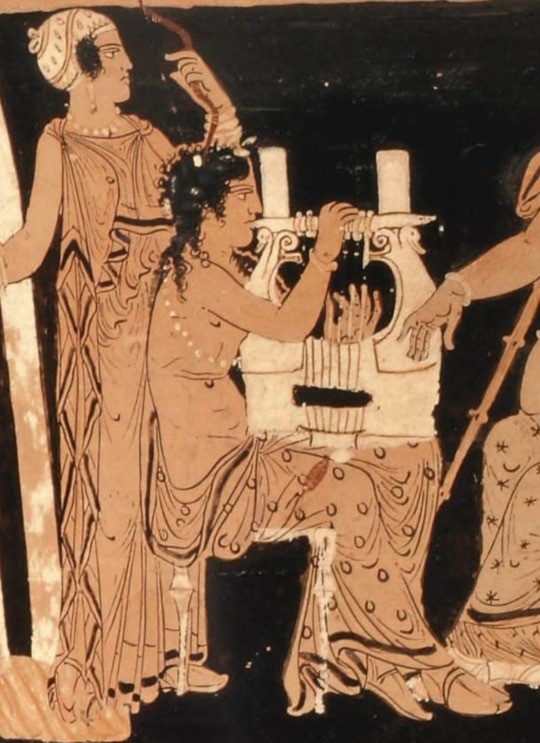

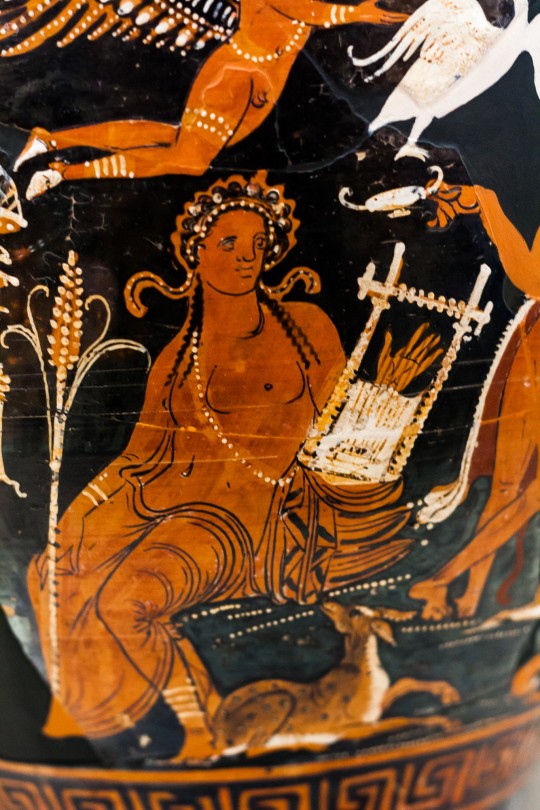
^ He also has a leg bracelet in this one
In this painting, along with a body chain and a bracelet, there's a thigh band and a finger ring as well.
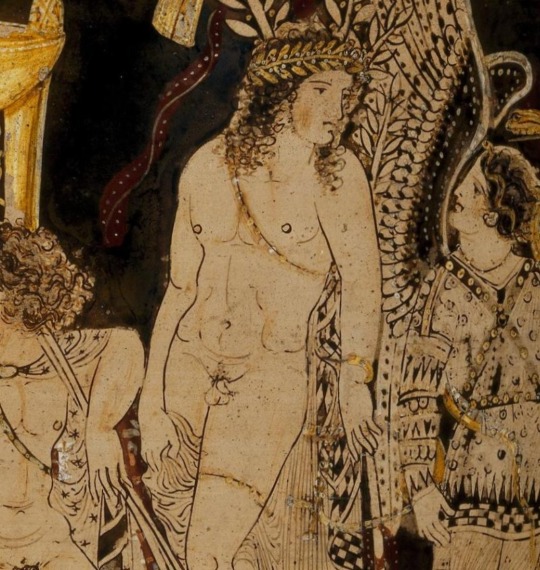

Then we have waist belts. I did entertain the possibility of this being an embroidered belt. However in the first image, the belt is gilded with gold, so imo it's meant to be a belt with gilded gold, if not made entirely of gold.


In this Etruscan painting representing Apollo going to/coming back from Hyperborea on a swan, he's wearing necklaces.

Apollo wearing a necklace and an arm band seems to be a fairly common sight in the Etruscan art (so Aplu, technically ig), as seen in these two statuettes:
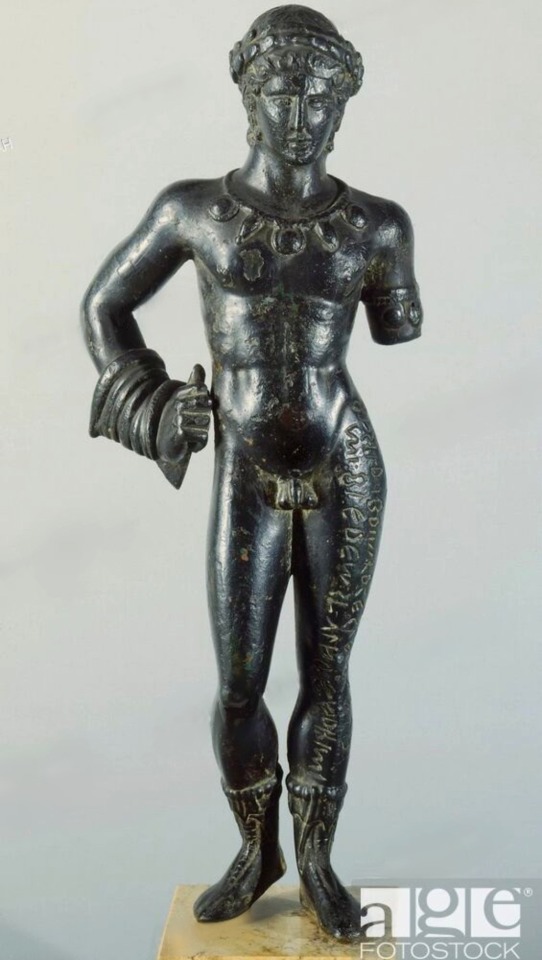
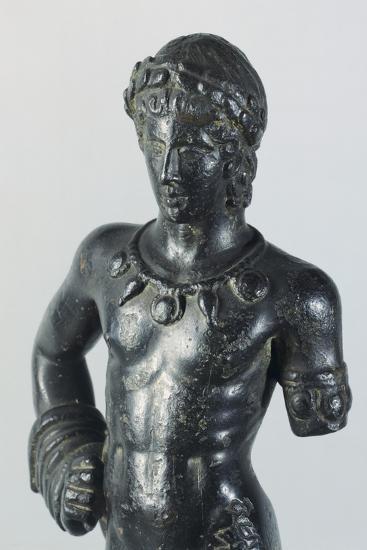

and some Etruscan mirror arts:
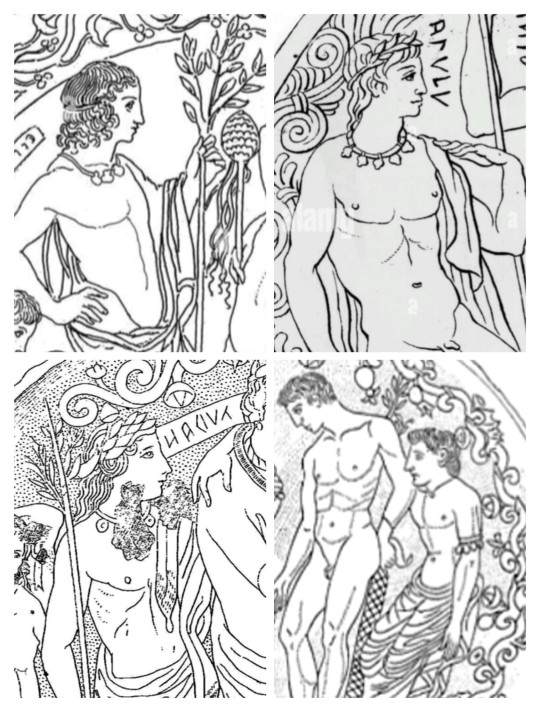
Now moving onto the diadems! A diadem referred to something you could tie your hair with - it could be a ribbon, a wreath of fresh leaves, or a jewelled wreath/head piece - it's the last one that I'm counting as jewellery. Diadems like the one Apollo is wearing below were usually worn by noblewomen.

You can also find depictions of Apollo with a jewelled wreath on his head. They resemble a laurel wreath, but they're made of gold, and have gems embedded. Here's a statue for example:

There are also Roman frescos and mosaics that show you what it actually looks like in color.


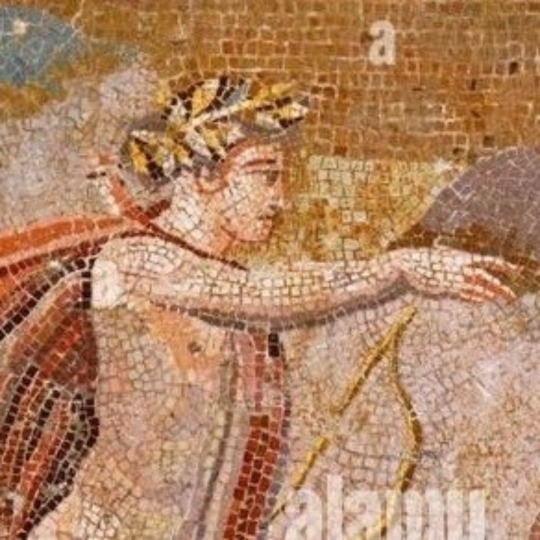

And here, you can see not just a gold diadem, but also bracelets on both his hands as well as anklets on his legs:

And there's what seems to be earrings as well? But honestly I'm not that sure, it could just be a damage on the fresco (even if that's the case, we can still appreciate the winged eyeliner amirite)

There's also this fresco of Apollo judging a beauty contest between Venus and Hesperus. Here he is not wearing a gold wreath, but there is a gold band upon his head:
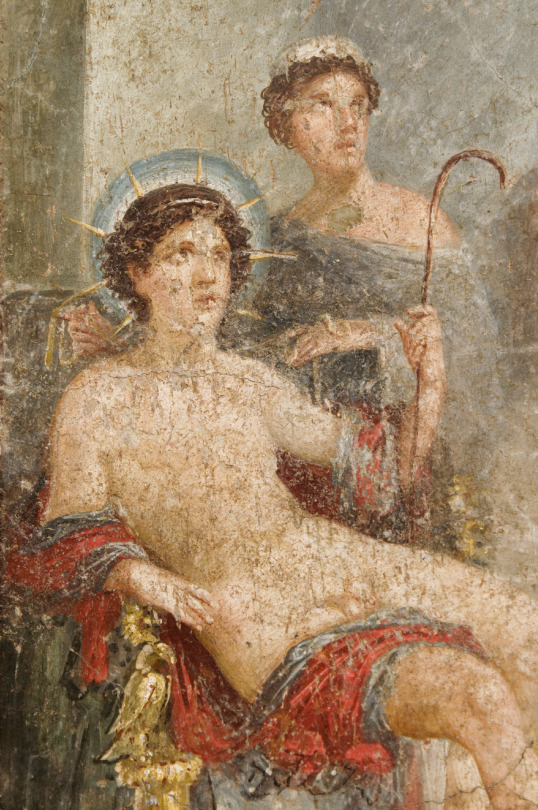
And unlike other pieces of jewellery, you'll find literary references as well for Apollo's diadem:
"When Apollo was born, Zeus equipped him with golden headband and lyre and gave him also a chariot of swans to drive" – Alcaeus, Hymn to Apollo (trans. David A. Campbell)
"Apollo puts his hair in order by shaping his flowing locks with soft foliage and braiding it with a golden diadem." – Virgil, Aeneid 4 (trans. Ingo Gildenhard)
"...he fastens bay about his lyre and the woven brilliance of his coronet, and ungirds his breast of the pictured girdle..." – Statius, Thebaid 6 (trans. J. H. Mozley)
"But you will say, Phoibos has a goldgleaming diadem." – Nonnus, Dionysiaca 4 (trans. William Henry Denham Rouse)
[Inscription]: "Apollo the mighty, Lord incomparable of the Diadem, who hath set up statues of the Gods in this kingdom" – Ammianus Marcellinus, History 17 (trans. John Carew Rolfe)
[Inscription]: "Mighty Apollo, seated upon truth, Lord of the Diadem, who hath gloriously honoured Egypt as his peculiar possession" – Ammianus Marcellinus, History 17 (trans. John Carew Rolfe)
And that's pretty much everything I've come across so far. I was a bit surprised at the lack of literary references for the effeminate gods. Not just Apollo, even Dionysus' effeminacy is described by his fair face and long hair and perfumed garments, and there are no mentions of jewellery afaik. But of course, just like with Apollo, you can find jewellery on Dionysus in the visual arts.
#Apollo#“is that an earring or just a very strangely drawn earlobe?” <- me looking at some of the vase paintings#and it was indeed a weirdly drawn earlobe everytime#lol#also I was internally giggling when I was zooming in on Apollo's finger ring in that one painting#i know rings as symbols of betrothal wasn't a concept in that time period but-!!#i couldn't help but think “ooooh who gave him the ring? 👀”#also anyone who knows more about ancient greek jewellery please tell me if men wore body chains at all??#because I couldn't find anything to support that historically#but in the paintings several male figures wear it so it couldn't be coming out of nowhere right??#mine#apollo info#jewellery
228 notes
·
View notes